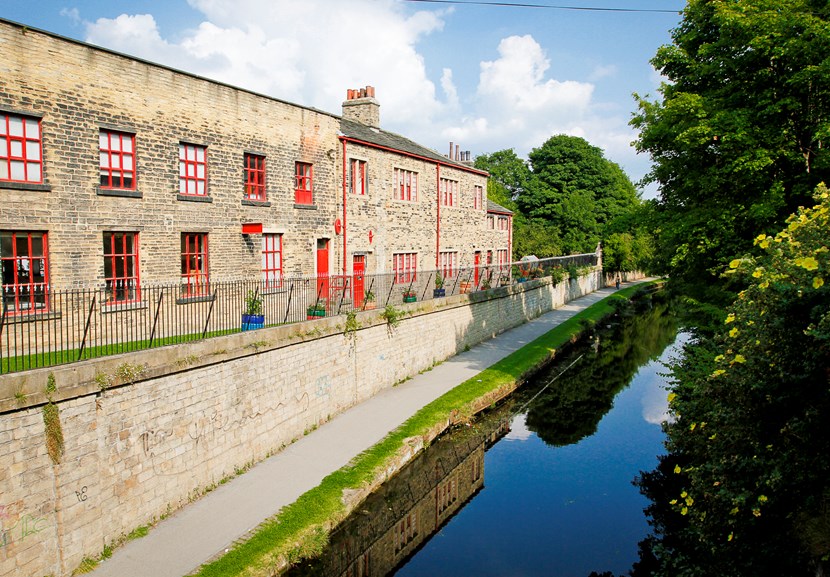
12 May 2016
Special plaque to mark record flooding at historic Leeds mill
A commemorative plaque will be unveiled at Leeds Industrial Museum tomorrow in recognition of the site’s inspiring recovery from the record Boxing Day floods.
The devastating December flooding forced the museum, which was once the world’s largest woollen mill, to close for almost three months while staff and council officers all pitched in for a massive clean-up operation.
Now, after a successful re-opening, a plaque, designed, made and donated by I.D. Howitt Ltd, has been placed on the outside of the building at the exact height the flood waters reached.
The plaque will be unveiled this Friday, May 13, at 12pm by Councillor Judith Blake, leader of Leeds City Council during a ceremony to coincide with the beginning of National Mills Weekend, which runs on May 14 and 15.
Councillor Blake said: “The way that Leeds Industrial Museum has been able to bounce back from the impact of December’s flooding typifies the spirit and determination that the whole city showed during one of the most challenging times in recent memory.
“It’s fitting that the floods, which had such a devastating effect on so many people, families, homes and businesses across Leeds, will be commemorated at a site that has been such an important part of our history and heritage for hundreds of years.”
December’s flooding saw parts of Armley’s historic former mill submerged under eight feet of water.
The flood waters reached levels three times higher than previous catastrophic flooding in 1866, an event which is also commemorated with a plaque at the site.
The unveiling of the new plaque tomorrow will kick-off National Mills Weekend, which will see activities taking place at Leeds Industrial Museum and Stourton’s Thwaite Mills.
Thwaite Mills was also hit by December’s floods when the nearby river burst into the Aire and Calder Navigation close to the site.
The flooding caused extensive damage to Thwaite Mills and the rest of the island on which it sits and firefighters were also called to help secure canal boats on the nearby Thwaite moorings.
On Saturday and Sunday from 10am until 5pm, visitors will have the chance to explore both sites and learn more about this year’s National Mills Weekend theme, which is vintage power.
And for this weekend only, tickets for Leeds Industrial Museum can also be used for entry to Thwaite Mills, which is one of one of the last remaining examples of a water-powered mill in Britain.
Anyone wanting to attend Friday’s ceremony at Armley should rsvp to armley.mills@leeds.gov.uk
For more information about National Mills Weekend, visit: leeds.gov.uk/Nationalmillsweekend
ENDS
Leeds mills factfile:
- The first recorded mention of Armley Mills was in the middle of the sixteenth century, when local clothier Richard Booth leased 'Armley Millnes' from Henry Saville.
- By 1788, when Armley Mills was purchased by Colonel Thomas Lloyd, a prosperous Leeds cloth merchant, it had grown into the largest woollen mill in the world.
- It continued to operate commercially until the 1970s, when it finally closed as a business. The site was bought by Leeds City Council, re-opening in 1982 as Leeds Industrial Museum.
- Today visitors can see machines from the golden age of industry in Leeds, discover how workers used the looms and spinning mules to turn wool into cloth, learn about tailoring techniques and find out about film in one of the world’s smallest 1920s cinemas.
- The first known mill on the site on Thwaite Mills was a fulling mill built in 1641.
- Thwaite Mills is set on an island between the River Aire and the Aire and Calder Navigation and once included workshops, orchards, arable land and pasture.
- The mill did not get an electricity supply until 1986, generating power from two water wheels and a Marshall engine.
For media enquiries contact:
Leeds City Council Communications team
communicationsteam@leeds.gov.uk